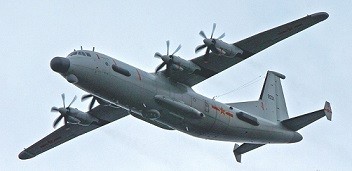Amid President Xi Jinping’s state visit to the United States, the latter has announced the interception of a Chinese jet plane by the U.S. air force.
The development comes despite President Xi's expressed desire to build a new model of relationship between the major countries, characterized by mutual respect in an environment devoid of conflict or confrontation.
In a report by the Want China Times, the Pentagon revealed that a Chinese aircraft had performed an unsafe maneuver during an air intercept of an electronic intelligence-gathering aircraft, the U.S. RC-135, on Sept. 15.
Pentagon spokesperson Peter Cook clarifies the statement by saying that the American pilot simply reported that the Chinese plane passed in front of his nose in an unsafe manner.
The incident reportedly took place 80 miles to the east of the Shandong peninsula in the Yellow Sea, which is in close proximity to the disputed Diaoyutai/Senkaku Islands in the East China Sea.
The incident marks the second near collision between the two countries' jets. Last August, Chinese P-11 nearly collided with a U.S. P-8 in disputed areas in the South China Sea and has prompted the Pentagon to label such an action by China as "aggressive" and "dangerous."
The WCT report has also cited Duowei news as saying that the U.S. is currently in a serious effort of deploying various surveillance units in the Asia Pacific.
Duowei added that spy planes, satellites and surveillance drones form the backbone of America's three-dimensional surveillance system.
Refusing to acquiesce to U.S. surveillance, China has enlisted 24 advanced Su-30MK2 fighter jets from Russia, among other newly acquired assets, in order to supplement its patrol squadrons that are tasked with monitoring the country's territory.






















